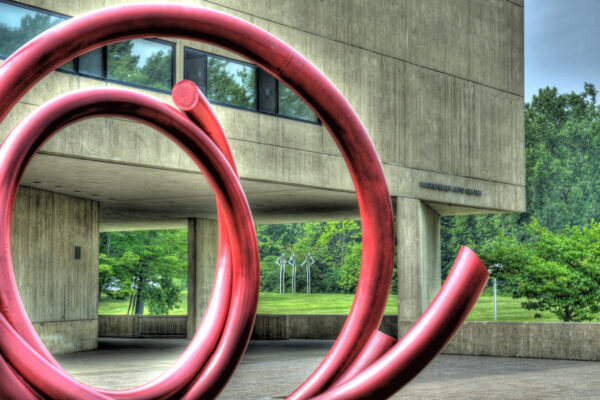Instead of viewing each other as opposing sides, both faculty and business officers must come together to participate in budget discussions and help ensure that institutions are operating in ways that are financially sustainable, writes Audrey Bilger.
In a recent Chronicle of Higher Education article on budget issues, Allison M. Vaillancourt, vice president of human resources and institutional effectiveness at the University of Arizona, Tucson, expressed frustration with faculty members who seemed oblivious to the financial challenges facing the higher education system today.
In the article, “You’re Saying We Have a Money Problem?,” Vaillancourt describes an encounter with a faculty senator that took place at the height of the recession in the midst of drastic budget cuts. The senate had just been briefed on the university’s dire economic situation, and the faculty member, baffled by this news, said, “It sounds like we have a serious money problem.”
Vaillancourt was shocked by his apparent cluelessness, and when she asked another administrator at her college why faculty were not better informed, she was told, “We don’t want to distract them from their teaching and research.”
As an English professor at a highly selective liberal arts college, I can certainly appreciate the impulse to respect faculty time as a valuable resource and preserve our peace of mind; however, it is becoming increasingly clear that in order to survive the financial storms that currently buffet the academy, faculty cannot be sheltered. Instead, we must participate in discussions about our institutions’ budgets and help ensure that our schools are operating in ways that are financially sustainable.
On the Same Side
Given the level of anxiety expressed in the 2013 Inside Higher Ed and Gallup survey of campus CFOs—with only 13 percent of respondents saying that they had confidence in the viability of their economic models over the next 10 years—the stakes could not be higher. This same survey found that only 4 percent of business officers considered faculty to be “realistic” about the challenges facing their institutions, and only 5 percent indicated that “faculty have been supportive of efforts to address the budget problems.”
Unfortunately, when battle lines get drawn—bean counters versus lofty thinkers, us versus them—there is little room for productive discussion. I recall getting quite testy a few years ago when a college trustee began quizzing me about how much time I spent on each class. I talked about course prep, office hours, advising, and grading; I brought up my scholarship and the intrinsic role it plays in my teaching. “But how long are you actually in the classroom?” he kept asking, the implication being that if my labor was dispersed among multiple sites and asynchronous activities, I did not have a real job.
As a 2014–15 ACE Fellow, I have had the opportunity to study institutional budget models and strategic planning, and what I’ve learned has made me think differently about that conversation. When I filter out the skepticism of the interlocutor—a private sector businessperson—and consider the basic reality that institutions need to make choices about how to allocate resources, I can see that he and I might not be on opposite sides of some moral continuum after all. We both want our college to thrive and we both believe in the value of higher education.
Back in the last century, professors did not have to worry much about deferred maintenance, tuition discounts, revenue generation, or the myriad elements that keep colleges and universities in business. We had the luxury of teaching our classes, writing books and articles, and conducting research—without having to worry about how the bills were getting paid. The job market in fields such as mine was certainly challenging—with hundreds of applicants for each place. We began to see adjunct faculty replace and supplement permanent positions, but those of us who made it through to tenure were, in general, not required to scrutinize the bigger financial picture.
Serious Consequences
The 21st century has not been kind to higher education. State and federal funding continue to shrink, politicians question the value of intellectual pursuits, and many institutions face the very real possibility of having to close their doors. Take, for example, Sweet Briar College, Va., which announced that it would shut down at the end of the 2014–15 school year. The college’s faculty were well aware that their school was in financial trouble and were even involved in generating ideas to help. But, according to “The Unfortunate Fate of Sweet Briar’s Professors,” an article in The Atlantic, they did not expect the school to close.
Difficult Decisions
At press time, Virginia’s attorney general had announced Sweet Briar’s survival due to serious efforts by its alumnae. Nevertheless, dramatic changes must take place at the 3,250-acre campus that boasts an indoor equestrian center, an 8:1 student-faculty ratio, and an average class size of 11 students.
Many faculty members dislike thinking of higher education in business terms. As William F. Massey remarks in the book, Honoring the Trust: Quality and Cost Containment in Higher Education, “Nonprofit universities exist to produce value rather than money, but the enterprise must face marketplace realities every day.” In order for institutions to fulfill the mission of higher learning, they need to survive within a competitive landscape. Massey lays out the situation:
“In an ideal world a university’s ability to create value would be unbounded. Unfortunately for academic ideals, however, the pursuit of value confronts some serious constraints. First among them comes the need to obtain revenue.”
Faculty members need to sit down with business officers and other executive leaders to consider the best paths forward for their institutions. Rather than operating on the older model that pits professors against administrators, who are viewed as being on the “dark side,” all hands need to be on deck to develop strategies for survival.
Cutting costs need not be synonymous with layoffs or the elimination of programs. If faculty can see how the money gets spent, they are more likely to come up with creative solutions.
I know there are faculty members who want to be better informed and who would be willing to engage in productive discussions about the economic future of their schools. I encourage interested faculty to set up meetings with their CFOs, and to take a look at current and projected budgets. Ask about areas of risk and potential shortfalls, and confer with colleagues about possible changes that could improve the forecasts.
To business officers, I would say this: Don’t give up on the faculty. The past is not necessarily a model for what happens next. Higher education can adapt and maintain the ideals that distinguish it from for-profit businesses. We can and should keep talking.
This article appeared in the July/August 2015 issue of Business Officer magazine.
 Audrey Bilger, an 2014-15 ACE Fellow, is the faculty director of the Center for Writing and Public Discourse and professor of literature at Claremont McKenna College. Her most recent book, Here Come the Brides! Reflections on Lesbian Love and Marriage, coedited with Michele Kort, was a 2013 Lambda Literary Award finalist. She is the author of Laughing Feminism: Subversive Comedy in Frances Burney, Maria Edgeworth, and Jane Austen. She is a member of the Ms. Committee of Scholars and serves on the editorial boards of Pickering and Chatto’s Gender and Genre series and the Burney Journal. Her work has appeared in Ms magazine, the Ms blog, the Paris Review, the San Francisco Chronicle, the Los Angeles Times, and The Los Angeles Review of Books. Follow her on Twitter at @AudreyBilger. Photo by Greg Allen.
Audrey Bilger, an 2014-15 ACE Fellow, is the faculty director of the Center for Writing and Public Discourse and professor of literature at Claremont McKenna College. Her most recent book, Here Come the Brides! Reflections on Lesbian Love and Marriage, coedited with Michele Kort, was a 2013 Lambda Literary Award finalist. She is the author of Laughing Feminism: Subversive Comedy in Frances Burney, Maria Edgeworth, and Jane Austen. She is a member of the Ms. Committee of Scholars and serves on the editorial boards of Pickering and Chatto’s Gender and Genre series and the Burney Journal. Her work has appeared in Ms magazine, the Ms blog, the Paris Review, the San Francisco Chronicle, the Los Angeles Times, and The Los Angeles Review of Books. Follow her on Twitter at @AudreyBilger. Photo by Greg Allen.
If you have any questions or comments about this blog post, please contact us.


